Living with diabetes can sometimes feel like you're constantly watching what you eat, right? Believe me, I get it. But it doesn't have to be a constant struggle. One of the biggest game-changers for me was learning how to build a diabetes-friendly meal plan that actually works – one that keeps my blood sugar happy and leaves me feeling satisfied, not deprived.
That's why I'm excited to share this 7-day, 1500-calorie meal plan with you! It's packed with delicious, satisfying meals that nourish your body and help you take charge of your health. We'll focus on whole foods, lean protein, healthy fats, and fiber-rich options to keep you energized and feeling your best.
Now, remember, this is just a starting point. We're all unique, and what works for one person might need a little tweaking for another. Feel free to adjust it based on your own preferences, needs, and what you learn along the way. And of course, always chat with your doctor or a registered dietitian for personalized guidance, especially if you have any specific dietary needs or concerns.
Ready to kickstart this 7-day journey to a healthier you? Awesome, let's dive in!
Why Eating Matters When You Have Diabetes

Before we get to the good stuff (the food!), let's talk about why a diabetes-friendly diet is so important. When you have diabetes, your body has a bit of trouble regulating blood sugar. And if that's not managed well, it can lead to some not-so-fun health issues down the road.
But here's the good news: a well-planned diet can be your secret weapon! By focusing on the right kinds of foods, you can help prevent those frustrating blood sugar spikes and crashes. Here's the breakdown:
- Keep Those Carbs in Check: We'll be mindful of our carb intake, aiming for around 30 grams or less per meal. This doesn't mean saying “goodbye” to carbs forever, but rather choosing the good guys – complex carbs that are loaded with fiber and digest slowly. Think whole grains, legumes, and those awesome non-starchy veggies.
- Protein Power: Protein is your friend! It keeps you feeling full and satisfied, and it's essential for building and repairing your body. We'll make sure to include protein with every meal and snack. Think delicious fish, poultry, beans, lentils, tofu, and low-fat dairy.
- Embrace Healthy Fats: Don't shy away from fats! Healthy fats, like those found in avocados (my personal favorite!), nuts, seeds, and olive oil, are key for energy and keeping your body running smoothly. They also help you feel satisfied after a meal, which is a big win.
- Fiber is Your Superhero: Fiber is like a magic trick for blood sugar control. It slows down digestion and helps prevent those dreaded blood sugar spikes. We'll be filling up on fiber-rich fruits, vegetables, and whole grains.
- Go Low-GI: The Glycemic Index (GI) ranks foods based on how quickly they raise your blood sugar. We'll be choosing low-GI foods that have a gentler impact on your blood sugar levels – things like non-starchy vegetables, berries, and legumes.
Finding Your Calorie Sweet Spot
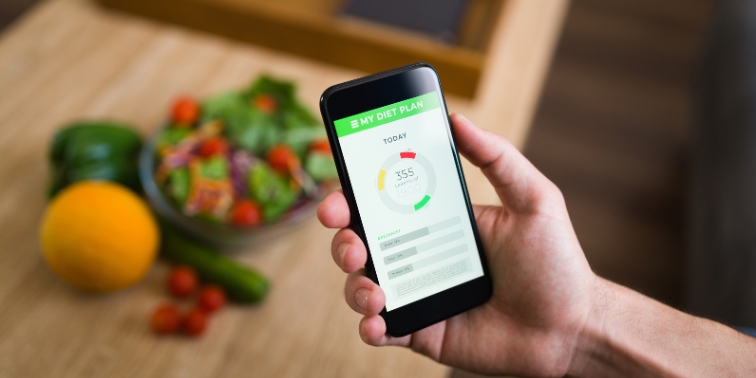
This meal plan is built around 1500 calories a day, but let's be real, we're not all the same! Things like how active you are, your age, your metabolism, and even your individual health goals all play a role in figuring out how many calories you need each day.
That simple formula of multiplying your weight in pounds by 15? It can give you a rough idea, but it's definitely not one-size-fits-all.
Here's the thing:
- Your Body Composition Matters: Muscle burns more calories than fat, even when you're just chilling. So, if you have more muscle, you'll probably need more calories.
- Hormones Play a Role: Sometimes, our hormones can throw a wrench in things and affect our metabolism and calorie needs.
- Medications Can Make a Difference: Certain medications can influence your appetite and how your body uses energy.
So, how do you find your perfect calorie target?
- Team Up with a Dietitian: A registered dietitian is your best bet! They can help you figure out your individual calorie needs based on a thorough assessment.
- Explore Online Calculators: There are some handy online calculators that take into account things like your age, gender, activity level, and weight goals to give you a more accurate estimate.
- Listen to Your Body: Pay attention to how you feel and how your body responds to your current calorie intake. If you're not losing or gaining weight as you'd like, it might be time to adjust your calorie target.
Once you have a good handle on your calorie needs, you can tweak this 7-day plan to fit you perfectly by adjusting portion sizes or adding/removing snacks.
Your 7-Day Meal Plan Roadmap
This plan gives you a solid framework with 3 meals and 3 snacks each day. And to make things super easy, each meal and snack includes calorie and carb counts so you can stay on track.
Here's a sneak peek at what a typical day might look like:
Sample Day:
- Breakfast: Imagine this: a warm bowl of oatmeal topped with colorful berries, crunchy walnuts, and a dash of cinnamon. Yum!
- Mid-morning Snack: A juicy apple with a dollop of almond butter – the perfect pick-me-up.
- Lunch: A big, beautiful salad with grilled chicken, creamy avocado, a mix of greens, and all the colorful veggies you can imagine. Drizzle with a simple olive oil and vinegar dressing, and you're good to go!
- Afternoon Snack: Smooth and creamy Greek yogurt with some refreshing cucumber and a squeeze of lemon. So good!
- Dinner: Flaky baked salmon with roasted broccoli and fluffy quinoa. A delicious and satisfying meal that's easy to make.
- Evening Snack: Crunchy baby carrots with a scoop of hummus – the perfect way to end the day.
A few things to keep in mind:
- Adjust as Needed: If you need to tweak the calorie intake, start by adding or removing a snack. Still need to adjust? Play around with the portion sizes of your meals.
- Veggie Power: Don't underestimate those non-starchy veggies! They're low in calories and carbs, and they add tons of flavor, volume, and nutrients to your meals. Load up on those veggies!
- Stay Hydrated: Water is your best friend. It helps with everything from digestion to blood sugar regulation. Keep that water bottle close!
Alright, now for the fun part – let's get cooking!
Day 1
- Breakfast (264 cal, 18g carbs): Greek yogurt (1.5 cups, nonfat, plain), blackberries (1/2 cup), chopped walnuts (2 tablespoons).
- Morning Snack (170 cal, 21g carbs): 2 clementines, 10 almonds (about 1/2 ounce).
- Lunch (360 cal, 30g carbs):White Bean & Veggie Salad (1 serving).
- Afternoon Snack (114 cal, 14g carbs): Raspberries (1 cup), 1 string cheese (about 1 ounce).
- Dinner (550 cal, 30g carbs): Ginger-Tahini Oven-Baked Salmon & Vegetables (1 serving).
- Evening Snack (40 cal, 6g carbs): 1/2 cup cucumber slices with 1 tablespoon hummus.
Total: 1498 calories
Day 2
- Breakfast (288 cal, 22g carbs):Muffin-Tin Omelets with Feta & Peppers (1 serving), medium orange.
- Morning Snack (200 cal, 5g carbs): 1 small cucumber with 2 tablespoons almond butter.
- Lunch (360 cal, 10g carbs): Avocado Grilled Chicken Salad (1 serving).
- Afternoon Snack (75 cal, 15g carbs): Sliced large bell pepper, 1 medium carrot.
- Dinner (418 cal, 14g carbs):Homemade Chicken Tenders with Everything Bagel Seasoning over Salad (1 serving), 1/2 avocado.
- Evening Snack (160 cal, 6g carbs): 1 cup low-fat cottage cheese.
Total: 1501 calories
Day 3
- Breakfast (288 cal, 22g carbs):Muffin-Tin Omelets with Feta & Peppers (1 serving), medium orange.
- Morning Snack (148 cal, 19g carbs): 2 clementines, 1 boiled egg (large).
- Lunch (360 cal, 10g carbs): Avocado Grilled Chicken Salad (1 serving).
- Afternoon Snack (230 cal, 16g carbs): Greek yogurt (1.5 cups, nonfat, plain) with Berries (1/2 cup)
- Dinner (525 cal, 25g carbs):Chicken Cutlets with Sun-Dried Tomato Cream Sauce (1 serving), steamed broccoli florets (3 cups).
- Evening Snack (40 cal, 6g carbs): 1/2 cup cucumber slices with 1 tablespoon hummus.
Total: 1591 calories
Day 4
- Breakfast (277 cal, 30g carbs):Blueberry Almond Chia Pudding (1 servings).
- Morning Snack (52 cal, 4.5g carbs): 1/4 cup cottage cheese (low-fat) with 3 cucumber slices.
- Lunch (360 cal, 10g carbs): Avocado Grilled Chicken Salad (1 serving).
- Afternoon Snack (306 cal, 8g carbs):Muffin-Tin Omelets with Feta & Peppers (1 serving), 1 string cheese (about 1 ounce).
- Dinner (376 cal, 21g carbs):Sheet-Pan Maple-Mustard Pork Chops & Carrots (1 serving).
- Evening Snack (190 cal, 29g carbs): 1 medium apple, 1 tablespoon peanut butter.
Total: 1561 calories
Day 5
- Breakfast (277 cal, 30g carbs):Blueberry Almond Chia Pudding (1 servings).
- Morning Snack (135 cal, 6g carbs): Nonfat plain Greek yogurt (1 cup).
- Lunch (360 cal, 10g carbs): Avocado Grilled Chicken Salad (1 serving).
- Afternoon Snack (160 cal, 6g carbs): Dry-roasted unsalted almonds (20 pieces, about 1 ounce).
- Dinner (490 cal, 27g carbs):No-Noodle Eggplant Lasagna (1 serving), Traditional Greek Salad (1 serving).
- Evening Snack (90 cal, 15g carbs): 1/2 cup mango slices with 1/4 cup non-fat Greek yogurt.
Total: 1512 calories
Day 6
- Breakfast (322 cal, 19g carbs): Greek yogurt (1.5 cups, nonfat, plain), blackberries (1/2 cup), chopped walnuts (2 tablespoons).
- Morning Snack (130 cal, 17g carbs): 1 small apple with 10 almonds
- Lunch (348 cal, 30g carbs):No-Noodle Eggplant Lasagna (1 serving), pomegranate seeds (1/3 cup).
- Afternoon Snack (92 cal, 6g carbs): 1/2 cup low-fat cottage cheese with 3 cucumber slices
- Dinner (428 cal, 17g carbs):Tofu & Vegetable Curry with Zucchini Noodles (1 serving).
- Evening Snack (97 cal, 9g carbs): 10-12 almonds with 1/2 cup strawberries.
Total: 1417 calories
Day 7
- Breakfast (288 cal, 22g carbs):Muffin-Tin Omelets with Feta & Peppers (1 serving), medium orange.
- Morning Snack (170 cal, 25g carbs): Medium carrots, sliced (4), 1 boiled egg (large).
- Lunch (337 cal, 26g carbs):No-Noodle Eggplant Lasagna (1 serving), sliced medium bell pepper.
- Afternoon Snack (85 cal, 6.5g carbs): Greek yogurt (1/2 cups, nonfat, plain) with Berries (1/4 cup)
- Dinner (519 cal, 13g carbs):Shrimp Cauliflower Fried Rice (1 serving), mixed greens (2 cups), Homemade Vinaigrette with Sesame & Ginger (1 serving), 1/2 avocado.
- Evening Snack (120 cal, 24g carbs): Frozen yogurt (1/2 cup).
Total: 1519 calories
Making It Your Own: Your Meal Plan, Your Way
Remember, this meal plan is your guide, not your boss! Feel free to swap out meals, ingredients, or even whole days to make it work for you. The most important thing is to choose foods you love and that make you feel good, all while keeping an eye on those calorie and carbohydrate targets.
Need some inspiration? Here are a few ideas:
- Not a salmon fan? No problem! Swap it out for another lean protein like chicken breast, tofu, or even tempeh.
- Allergic to nuts? Sunflower seeds or pumpkin seeds make great alternatives to almonds or walnuts.
- Need to adjust your calories? No worries! Use measuring cups and a food scale to help you adjust portion sizes and hit your calorie goals.
Staying on Track: Tips and Tricks
Let's be honest, sticking to a new meal plan can be tough sometimes. Life gets in the way, cravings hit, and sometimes you just don't feel like cooking. But don't worry, I've got you covered!
- Short on Time? Meal prepping is your new best friend! Spend some time on the weekend cooking big batches of food, then portion them out for the week. It's a lifesaver on busy weekdays.
- Cravings Got You Down? We all get them! Instead of reaching for that bag of chips, try a healthier alternative like fruit with nut butter or a small piece of dark chocolate.
- Eating Out with Friends? No problem! Check out the menu online beforehand and choose diabetes-friendly options. You can also offer to bring a healthy dish to share.
- Need a Motivation Boost? Remember why you started! Keep your health goals in mind and focus on how amazing you feel when you're eating healthy. You can also find a support buddy or join a diabetes support group – it's always easier when you have others cheering you on!
Here's a story that might inspire you:
“I used to feel like my blood sugar was controlling me, not the other way around,” shares Sarah, a 48-year-old living with type 2 diabetes. “But after I started following a diabetes-friendly meal plan, everything changed. I have so much more energy, my blood sugar is stable, and I've even lost some weight. The best part? I'm actually enjoying the food I eat!”
Your Questions Answered
Q: Is this meal plan okay for both type 1 and type 2 diabetes?
A: You bet! This meal plan is generally suitable for folks with any type of diabetes. But remember, it's always a good idea to check with your healthcare team for personalized advice, especially if you have specific dietary needs or restrictions.
Q: Can I do this meal plan if I'm also doing intermittent fasting?
A: Absolutely! You can definitely adapt this meal plan to fit your intermittent fasting schedule. Just combine meals or skip snacks as needed, making sure you're still getting enough calories within your eating window.
Q: What if I can't follow the meal plan perfectly every day?
A: Hey, life happens! Don't beat yourself up if you have to stray from the plan sometimes. Just try your best to match the daily calorie and carb targets as closely as you can and get back on track with your next meal. Progress, not perfection, right?
Q: I'm not a big cook. Can I still eat healthy?
A: Totally! Healthy eating is possible even if you don't love spending time in the kitchen. There are tons of pre-made meals and snacks out there that fit right into your calorie and carb goals. Just be sure to read those nutrition labels carefully and choose options that are low in added sugars, saturated fat, and sodium.
Q: Can I keep using this meal plan after the first week is over?
A: For sure! You can repeat the plan, mix and match meals from different days, or explore new diabetes-friendly recipes to keep things interesting. The possibilities are endless!
Beyond the Plate: More Than Just Food
Managing diabetes is a journey, and it's about more than just what you eat. It's about taking care of your whole self.
- Get Moving: Physical activity is a game-changer! It helps regulate your blood sugar and improves your overall health. Aim for at least 30 minutes of moderate-intensity exercise most days of the week. Find something you enjoy, whether it's walking, dancing, swimming, or biking.
- Stay on Top of Your Meds: If you're on medication, be sure to take it as prescribed by your doctor.
- Stress Less: Stress can wreak havoc on your blood sugar levels. Find healthy ways to manage stress, like yoga, meditation, spending time in nature, or listening to your favorite music.
- Regular Checkups are Key: Keep track of your blood sugar levels and see your healthcare team regularly. They're your partners in this journey!
This 7-day meal plan is just one tool in your diabetes toolkit. By combining healthy eating with other healthy habits, you can take control of your health and live a full and vibrant life.
And remember, you're not alone in this. Reach out to your healthcare team, join a support group, or connect with loved ones for support and encouragement. You've got this!
References
- Effect of a Moderate-Carbohydrate, Mediterranean Diet in Patients with Type 2 Diabetes: A Randomized Controlled Trial (Estruch et al., 2013) – Annals of Internal Medicine – This study investigated the effects of a Mediterranean diet with moderate carbohydrate intake on individuals with type 2 diabetes.
- The Effect of a Low-Carbohydrate, Ketogenic Diet on Glycemic Control in Type 2 Diabetes Mellitus: A Randomized Controlled Trial (Saslow et al., 2017) – Nutrition & Metabolism – This study examined the impact of a very low-carbohydrate ketogenic diet on blood sugar control in individuals with type 2 diabetes.
- A Low-Carbohydrate Diet for the Treatment of Type 2 Diabetes (Westman et al., 2008) – New England Journal of Medicine – This study compared a low-carbohydrate diet to a standard diabetes diet in individuals with type 2 diabetes.
- Dietary carbohydrate restriction as the first approach in diabetes management: Critical review and evidence base (Feinman et al., 2015) – Nutrition – This review article explores the evidence supporting carbohydrate restriction as a primary approach for managing diabetes.
- Long-term effects of a very low-carbohydrate weight loss diet compared with an isocaloric low-fat diet after 12 mo. (Foster et al., 2010) – American Journal of Clinical Nutrition – This study compared the long-term effects of a very low-carbohydrate diet to a low-fat diet in individuals with type 2 diabetes.
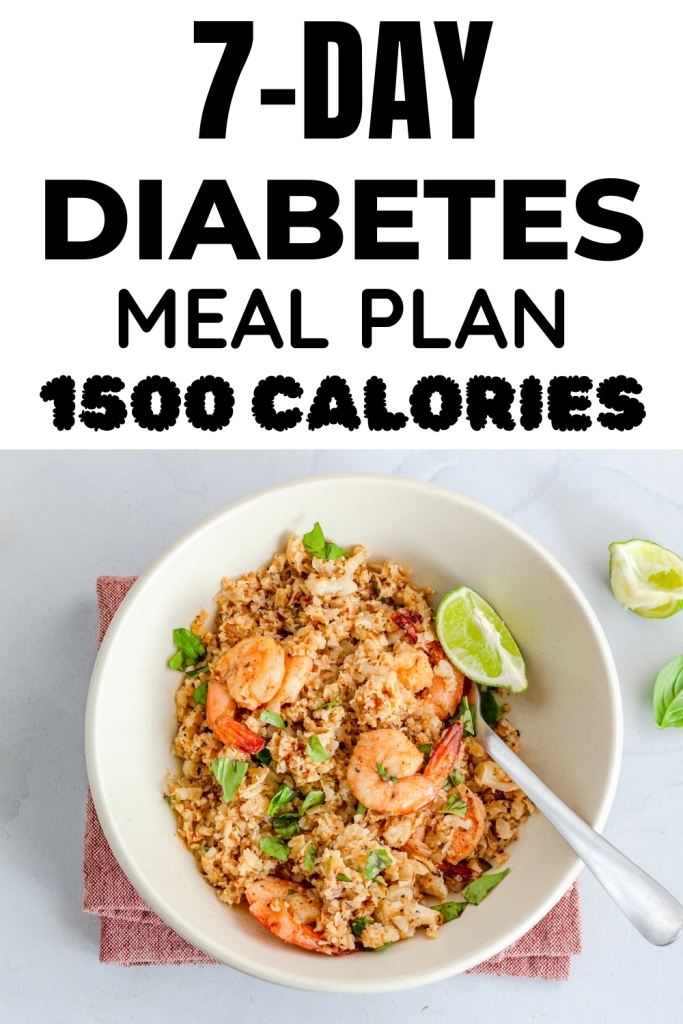
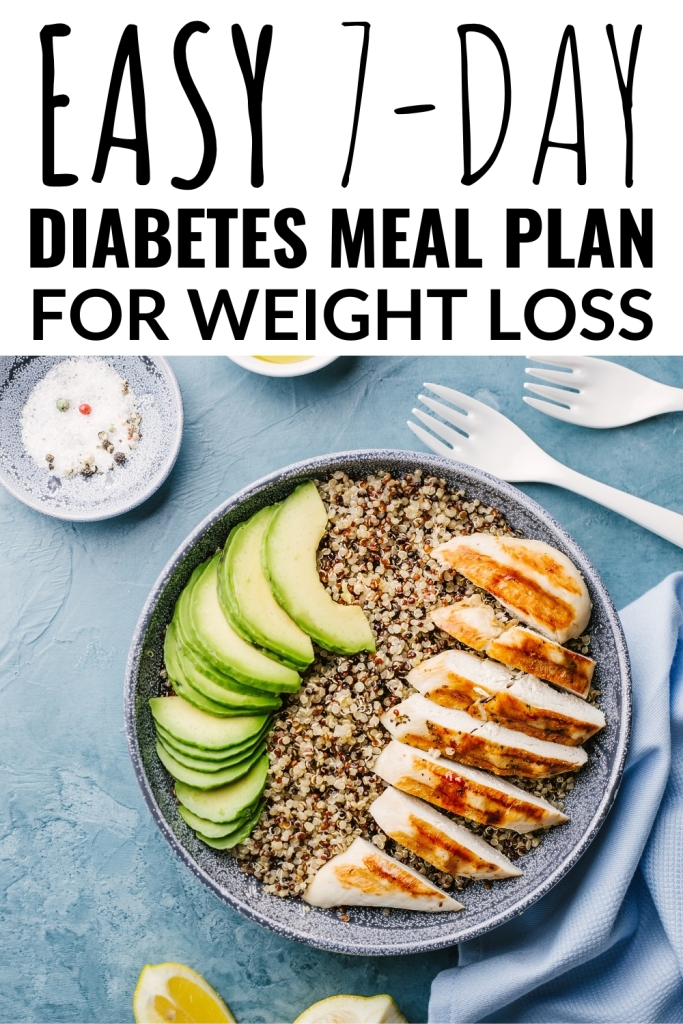


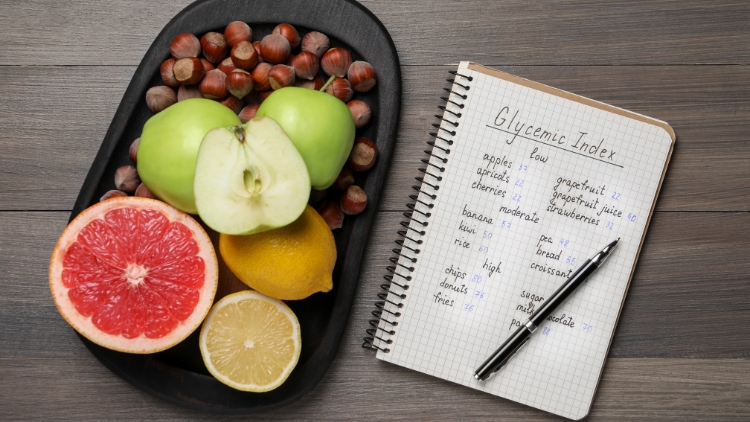
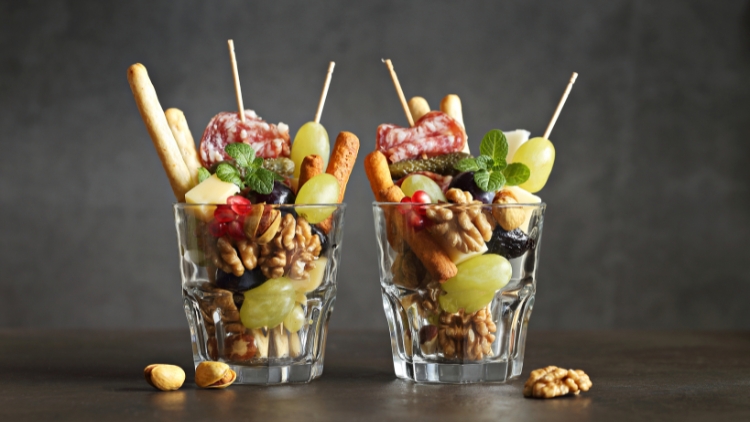
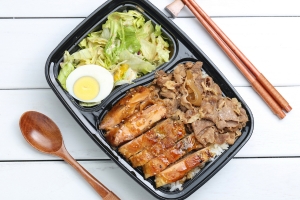

16 Responses
I’m a bit confused about the carb counting. Some of these meals seem to have more than 30g of carbs, especially the ones with fruit. Isn’t fruit supposed to be limited when you have diabetes?
Hi sarah, Thanks for bringing that up! It’s true that we need to be mindful of carbs with diabetes, but fruit can definitely be part of a healthy meal plan. The key is choosing fruits that are lower in sugar and higher in fiber, like the berries used in this plan. They have a lower glycemic index, meaning they don’t cause as rapid a spike in blood sugar. Plus, they’re packed with vitamins and antioxidants! The meal plan takes all of that into consideration. The 30g carb target is a general guideline for most meals, but it’s the overall daily carb intake that matters most, too. This plan keeps that in mind, and you’ll see carb counts for each meal and snack to help you track. However, it’s always best to consult your healthcare provider or a dietitian for personalized advice on your carb intake.
I travel a lot for work, so sticking to a strict meal plan is tough. Any tips for making this work when I’m on the go?
Hi David, I understand that traveling can make it challenging to stick to a meal plan. But don’t worry, it’s still doable! Here are a few tips:
Plan Ahead: Look at restaurant menus online before you go and identify diabetes-friendly options.
Pack Snacks: Bring along healthy snacks like nuts, seeds, or low-carb protein bars to avoid relying on unhealthy airport or convenience store food.
Focus on Whole Foods: When ordering, choose meals that are based around lean protein, vegetables, and healthy fats.
Watch Portions: Be mindful of portion sizes, especially when eating out, as restaurant portions can often be much larger than what you’d eat at home.
Don’t Stress About Perfection: Do your best to make healthy choices, but don’t beat yourself up if you have to deviate from the plan occasionally. Just get back on track with your next meal.
This meal plan looks pretty good, and I appreciate the focus on whole foods. My concern is the carb count. 30 grams per meal seems a bit high for some people with diabetes, especially if they’re also watching their weight closely. I’ve had better success with lower carb approaches in the past. Has anyone else found this to be the case? I’m curious to hear other people’s experiences.
Hi Brenda, thanks for your insightful comment! You’re absolutely right, 30 grams of carbs per meal might not be ideal for everyone. Carb sensitivity varies greatly among individuals with diabetes. This plan is designed as a general guideline, and it’s crucial to personalize it based on your own needs and how your body responds. If you’ve had success with lower-carb diets in the past, by all means, adjust the plan accordingly. You could reduce the portion sizes of carb-containing foods or swap them out for lower-carb alternatives. The key is to monitor your blood sugar levels closely and work with your doctor or a registered dietitian to find what works best for you. Thanks for raising this important point!
I’m a busy mom and the idea of meal prepping every weekend feels overwhelming. While the meals look tasty, I’m wondering if there are any quick and easy substitutions for some of these recipes? Or maybe some tips for making the meal prepping less time-consuming? I sometimes struggle to find the time to cook elaborate meals.
Hi Susan, I completely understand where you’re coming from! Time is a precious commodity, especially for busy parents. Meal prepping doesn’t have to be a huge undertaking. Here are a few tips to make it more manageable:
Focus on batch cooking key ingredients: Instead of preparing entire meals, cook large batches of staples like grilled chicken, quinoa, or roasted vegetables. These can then be used in various meals throughout the week.
Utilize convenience foods (wisely): Pre-chopped vegetables, canned beans (rinse them well to reduce sodium), and frozen fruits and vegetables can save you a lot of time.
Choose simple recipes: There are plenty of diabetes-friendly recipes that require minimal cooking time and ingredients. Think sheet-pan meals, one-pot dishes, and quick salads.
Double recipes and freeze leftovers: When you do have time to cook, make extra and freeze it for future meals.
As for substitutions, for example, if you don’t have time to make the salmon recipe, you could quickly pan-fry some chicken breast or use canned tuna (in water, not oil). The most important thing is to prioritize whole foods and keep an eye on your carb and calorie intake. I hope these tips help!
1500 calories? I haven’t eaten that little since I was a teenager! And what’s with all this quinoa and chia seed pudding? Back in my day, we ate meatloaf and mashed potatoes and were just fine. Is this meal plan really going to keep a gal full and satisfied? Also, can I swap the salmon for a good ol’ fashioned burger sometimes? Asking for a friend… who may or may not be me.
Betty, you legend! I totally get it. 1500 calories can sound a bit daunting, especially when you’re used to meatloaf and mashed potatoes (which, by the way, sound amazing right now). But trust me, this meal plan is designed to be surprisingly satisfying. We’re packing in the protein, healthy fats, and fiber to keep you feeling full and energized. The quinoa and chia seeds might sound a bit “new age,” but they’re actually nutritional powerhouses that can help keep your blood sugar stable. As for swapping the salmon for a burger, well, life’s all about balance! You can certainly enjoy a burger occasionally. Just opt for a lean beef patty, load up on the veggies, and maybe skip the bun or go for a whole-wheat one. Moderation is key! Think of this meal plan as a starting point, and feel free to adjust it to your liking. After all, you’ve earned it!
This all sounds lovely, but I’m a terrible cook. My idea of cooking is microwaving a frozen dinner. And to be honest, I’m not a big fan of vegetables. They just taste… green. Can I still manage this meal plan if I’m kitchen-challenged and veggie-averse? Also, what if you’re allergic to some foods that are listed on the meal plan, like almonds?
Margaret, you’re speaking my language! I used to burn water, so I understand the kitchen struggle. The good news is, you don’t have to be a master chef to follow this meal plan. There are plenty of simple recipes and even pre-made options that can fit the bill. Look for pre-cut veggies, rotisserie chicken, and other shortcuts to make your life easier. As for the veggies, I get it – not everyone loves them. But maybe you just haven’t found the right ones yet! Try roasting them with a little olive oil and your favorite spices – it can make a world of difference. Or sneak them into smoothies or omelets where you won’t even notice them. And hey, if all else fails, there are plenty of other ways to get your fiber and nutrients. If you have a food allergy, like to almonds, you can substitute them. For almonds, you can substitute them with sunflower seeds. Don’t be afraid to experiment and find what works for you. Remember, this is YOUR journey, and you get to customize it to your own taste and skill level!
Okay, this meal plan looks pretty good on paper, but 1500 calories? I’m a pretty active gal, and I’m worried I’ll be starving all the time. Plus, three snacks a day? Who has time for that?! I feel like I’d be constantly eating. Is this really sustainable for someone who’s busy and on the go? I’m also a bit skeptical about whether this would actually keep my blood sugar stable throughout the day. I’m used to feeling those crashes, especially in the afternoon. Has anyone actually tried this long-term?
Hey Molly, thanks for the comment! I totally get your concerns. 1500 calories isn’t one-size-fits-all, and it’s definitely something you can adjust. Think of this as a starting point. If you’re super active, you might need to bump up those calories a bit, maybe by adding another snack or increasing portion sizes slightly.
As for the three snacks, they’re there to help prevent those blood sugar dips you mentioned. They don’t have to be elaborate – a handful of nuts or some veggies with hummus can do the trick. It’s more about keeping your body fueled consistently throughout the day. You can easily meal prep these in advance to make life easier!
Lots of people have found success with similar plans long-term, but it’s all about finding what works for you. Don’t hesitate to experiment and see what feels right. And, of course, chatting with your doctor or a dietitian is always a good idea if you have any concerns about your blood sugar. They can give you personalized advice. Good luck!
I’m intrigued, but I’m a vegetarian, and this plan seems pretty meat-heavy. Is it possible to modify it for someone who doesn’t eat meat or fish? Also, ‘Muffin-Tin Omelets’? Seriously, who has time to make mini omelets? I need something quick and easy in the morning. And honestly, some of these recipes sound a little…bland. Where’s the flavor? I need food that tastes good, or I’m going to fall off the wagon faster than you can say ‘chocolate cake’!
Hi Hannah, great questions! Yes, absolutely, you can make this plan vegetarian-friendly. There are tons of delicious plant-based proteins you can swap in. Think tofu, tempeh, lentils, beans, and even some plant-based meat substitutes in moderation. For the salmon, for example, you could easily substitute a nice piece of grilled halloumi or some marinated tofu.
As for the muffin-tin omelets, I hear you! They do take a bit more time than pouring a bowl of cereal, but the great thing is that you can make them ahead of time, and they are great for on the go. But if they’re not your thing, no worries. A quick scramble with some veggies or some overnight oats are great alternatives.
And about the flavor, don’t be afraid to spice things up! Herbs, spices, and sauces are your friends. This plan is a foundation, and you can definitely add your own flavor personality to it. A dash of hot sauce, a sprinkle of your favorite seasoning, or a flavorful dressing can make a world of difference. Don’t be afraid to get creative in the kitchen! Let me know if you need any specific vegetarian recipe ideas. I’m happy to help!